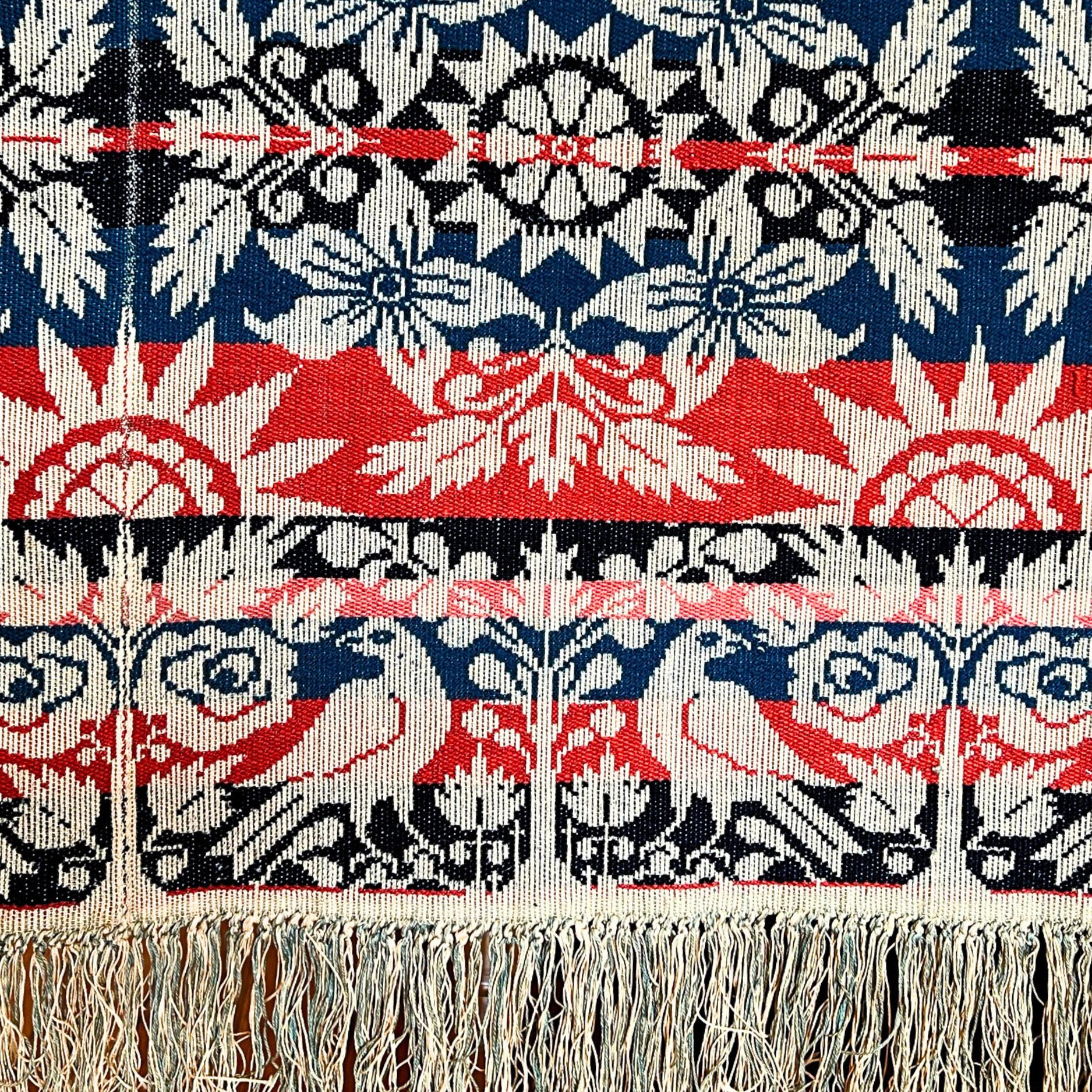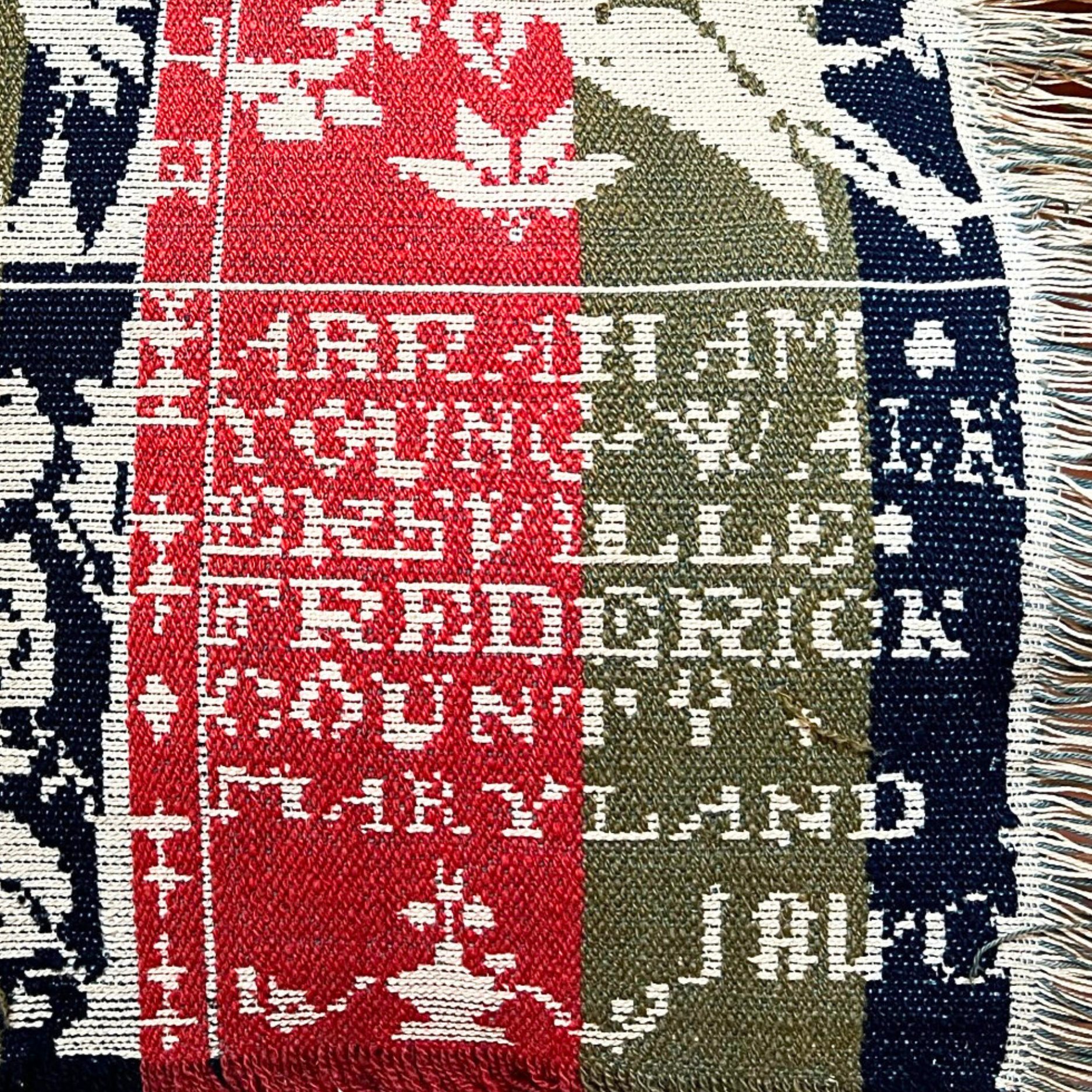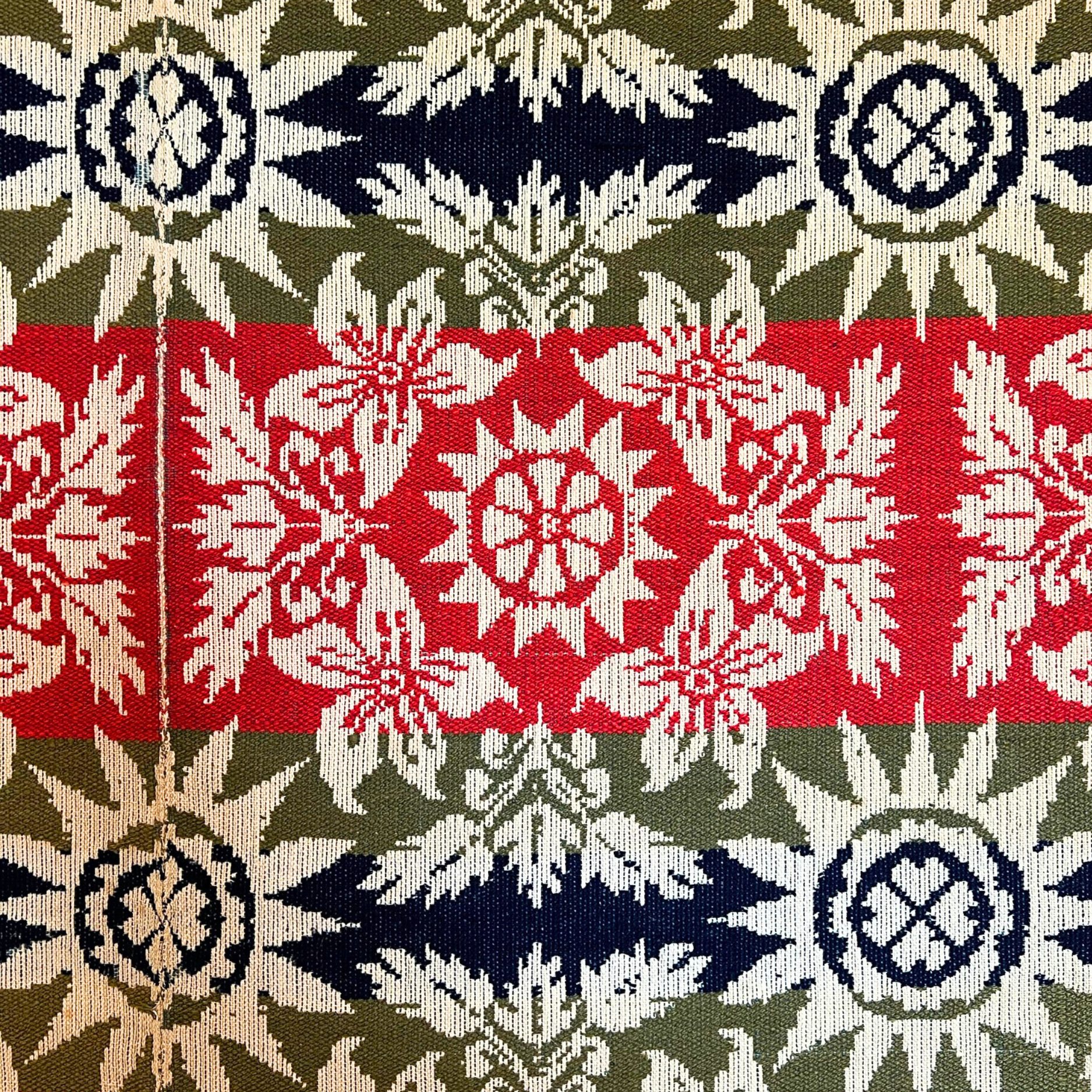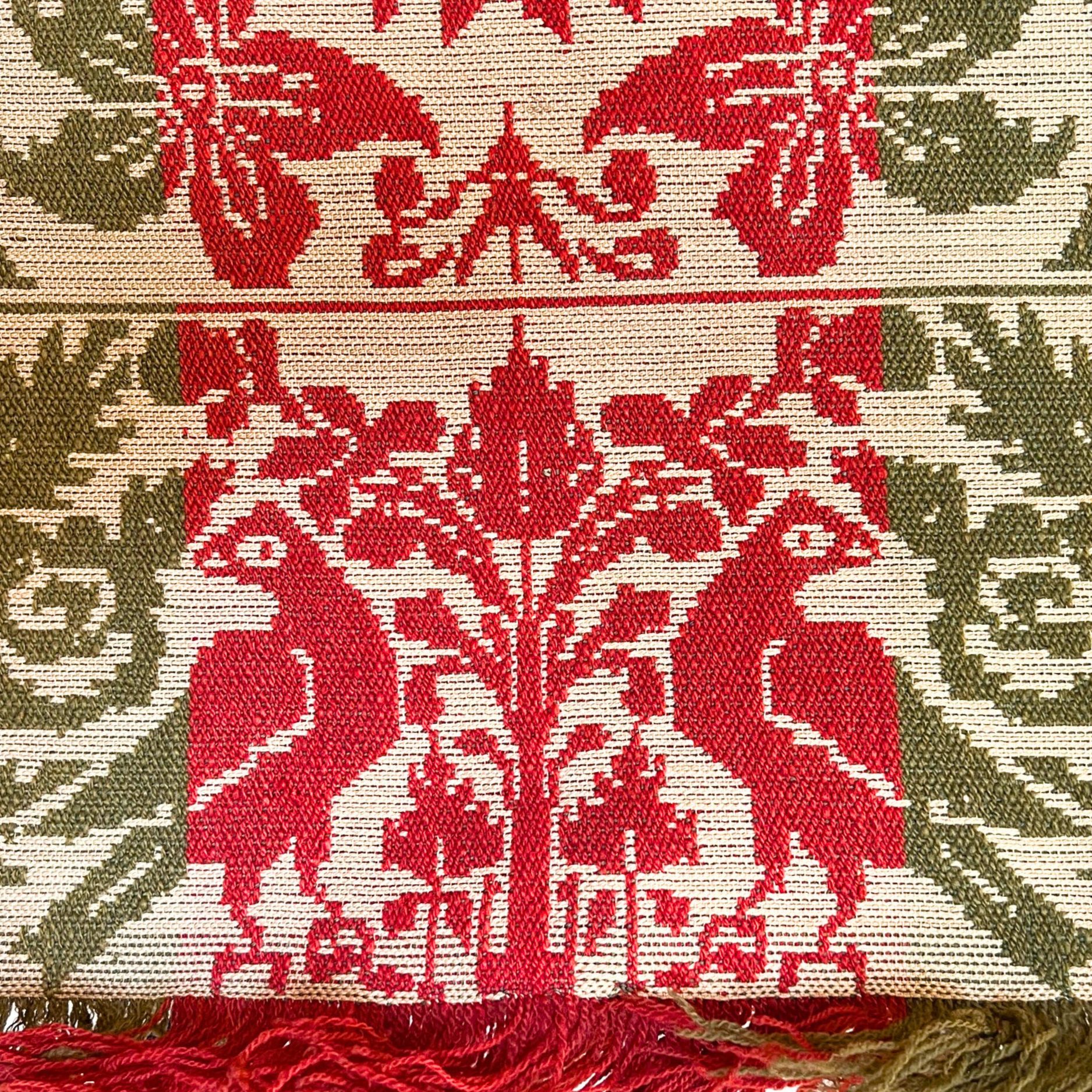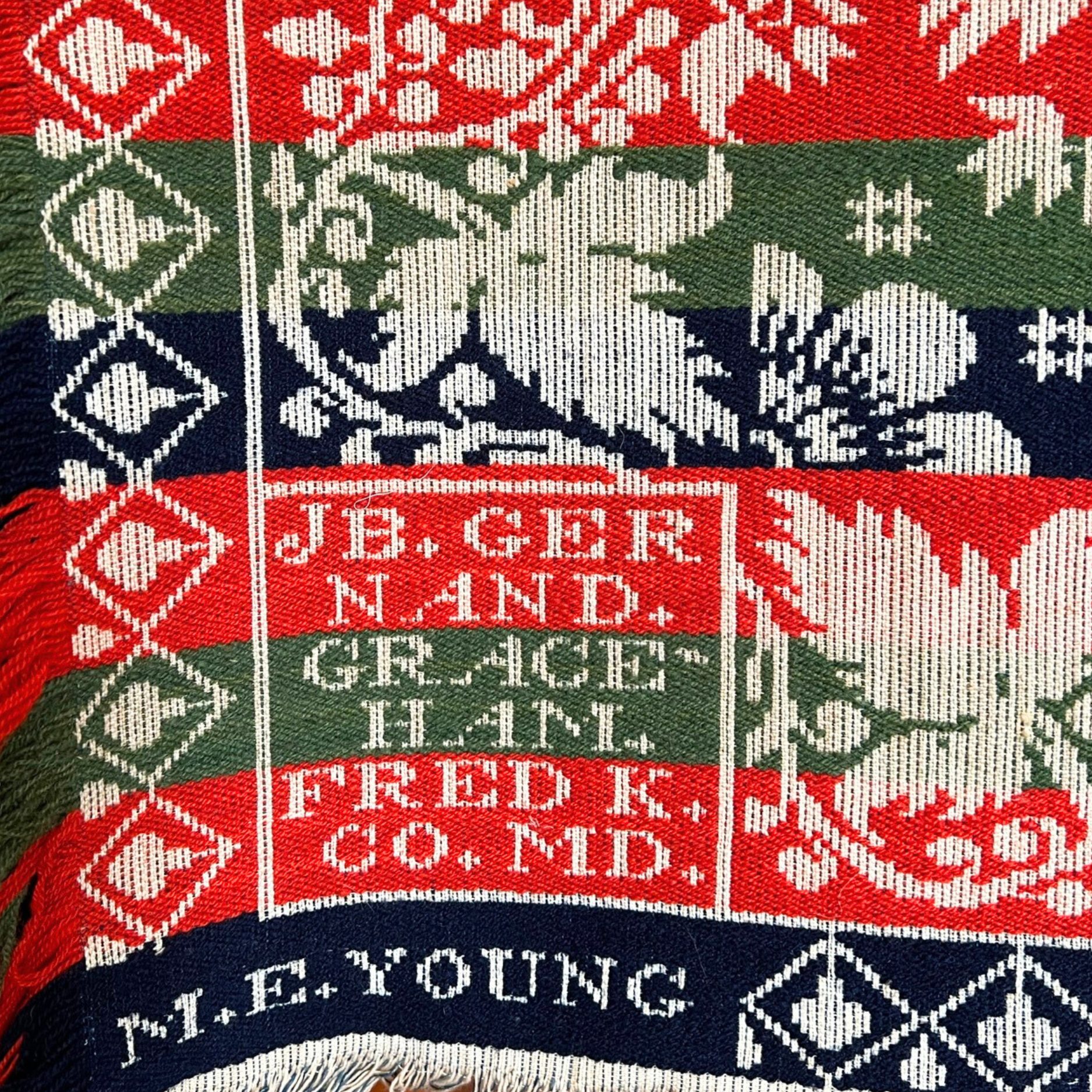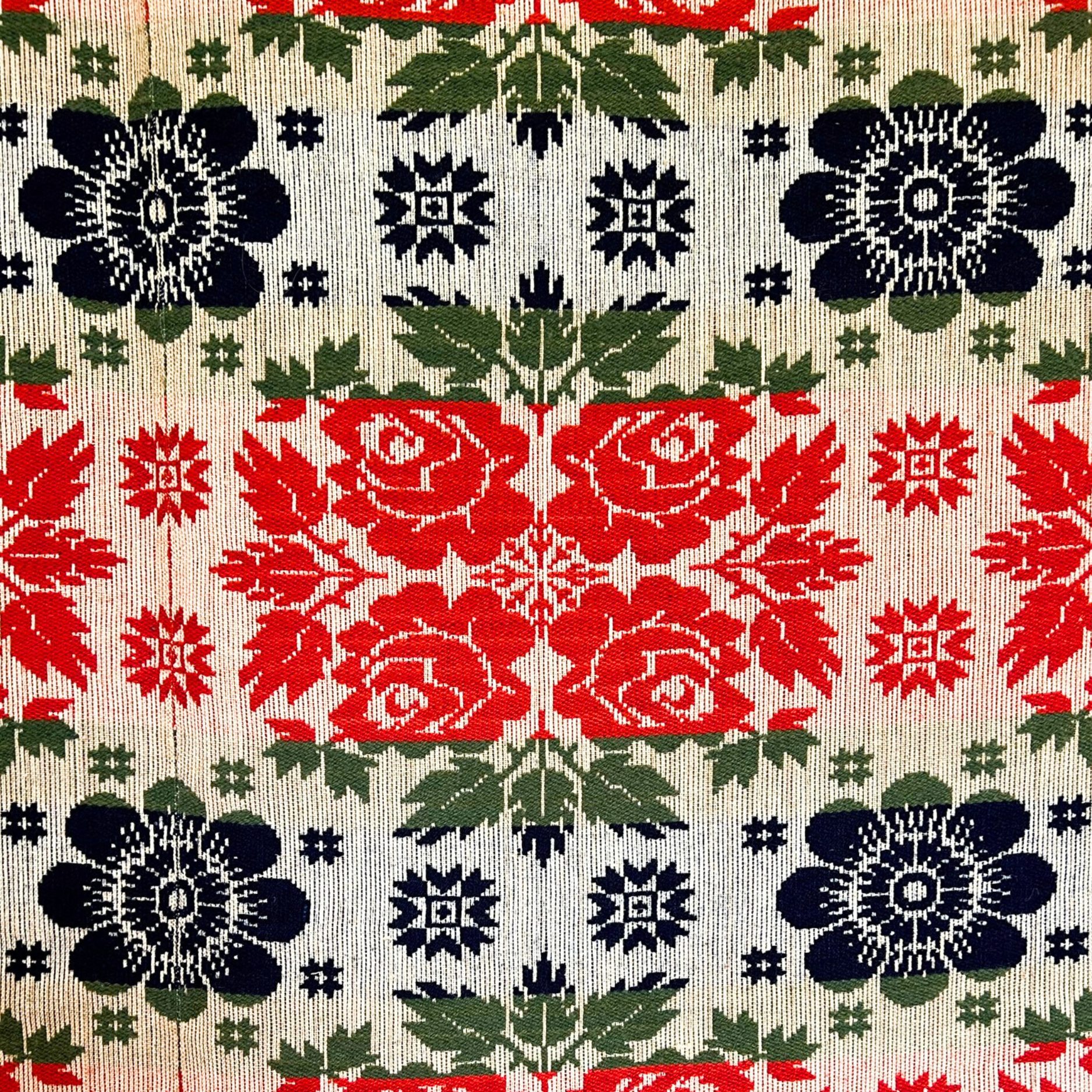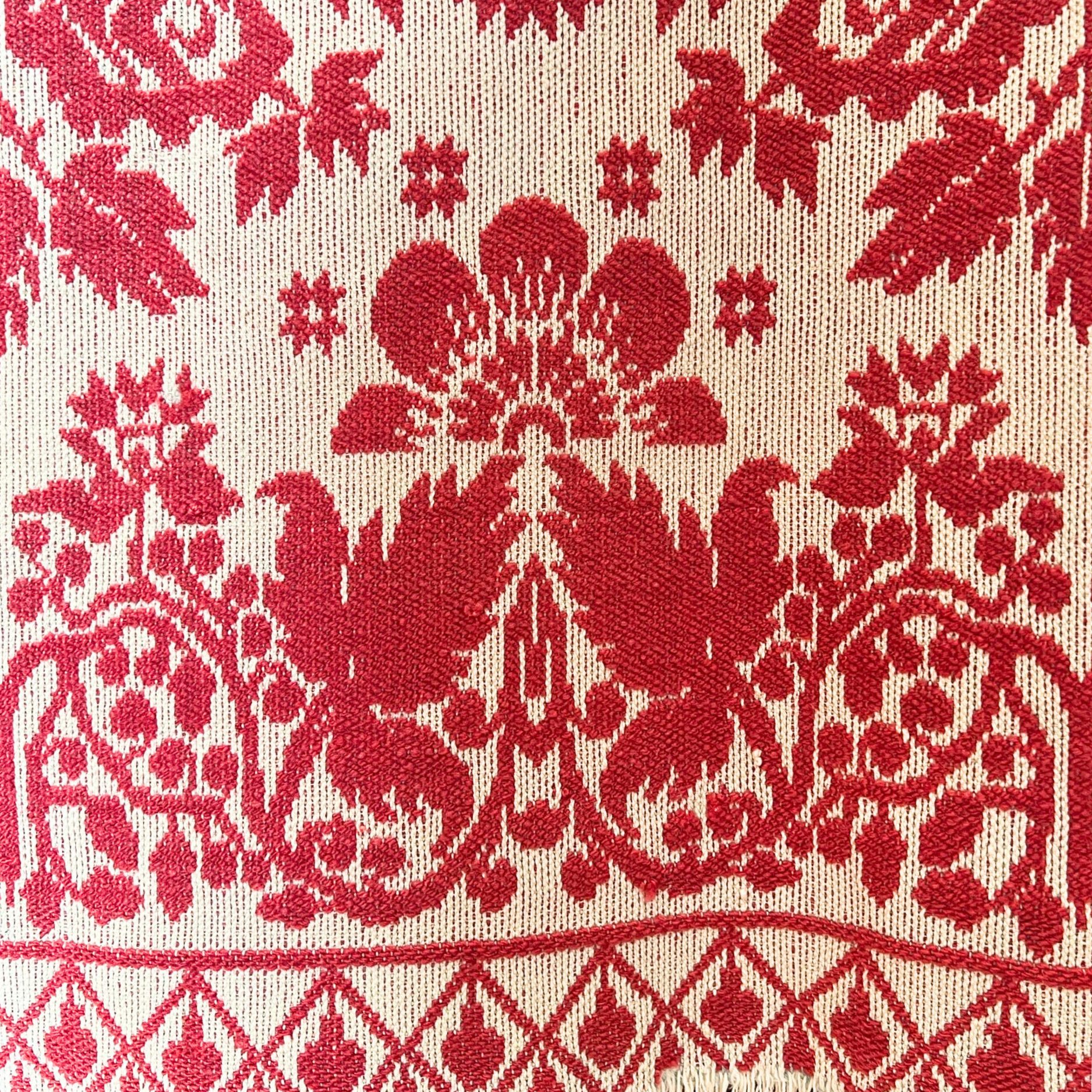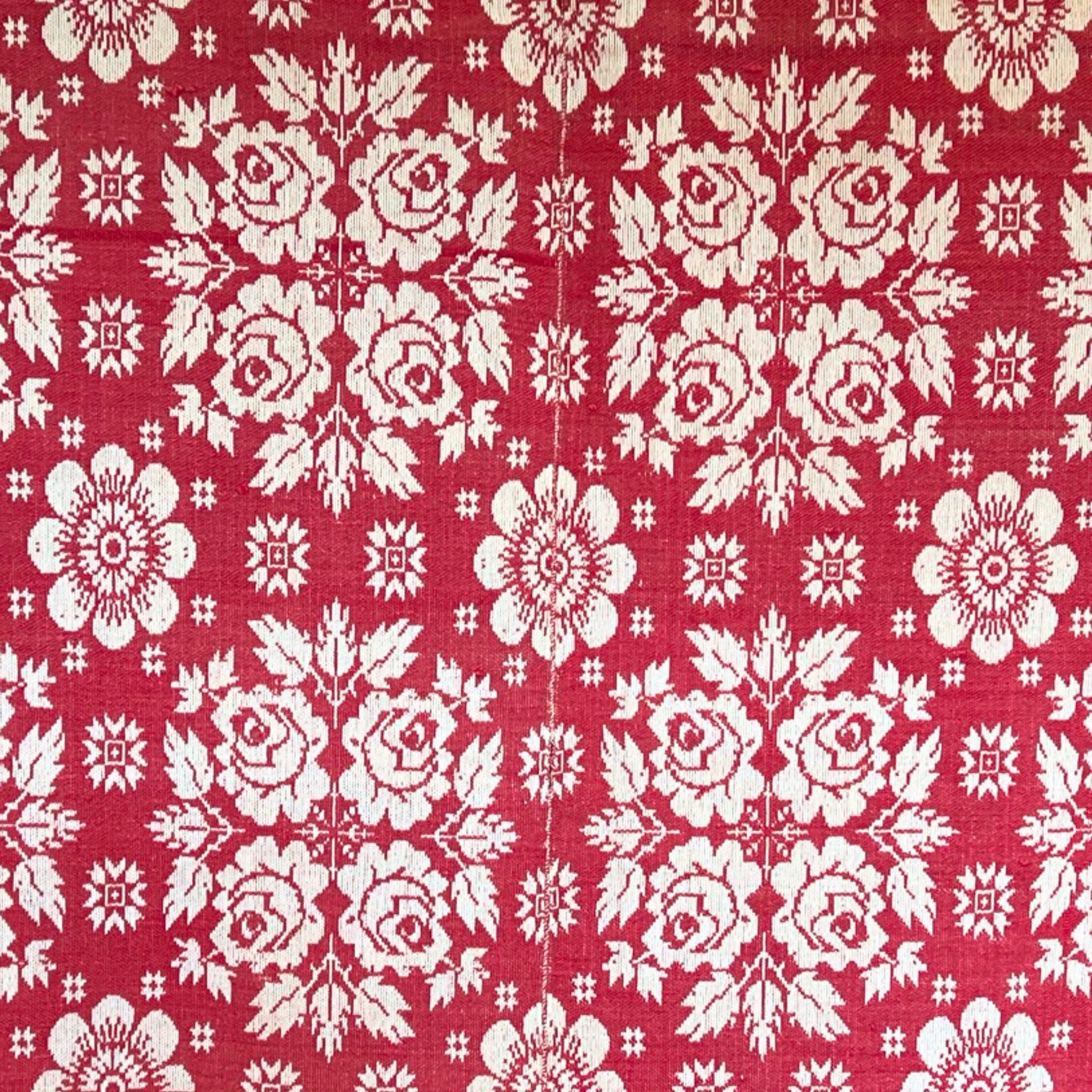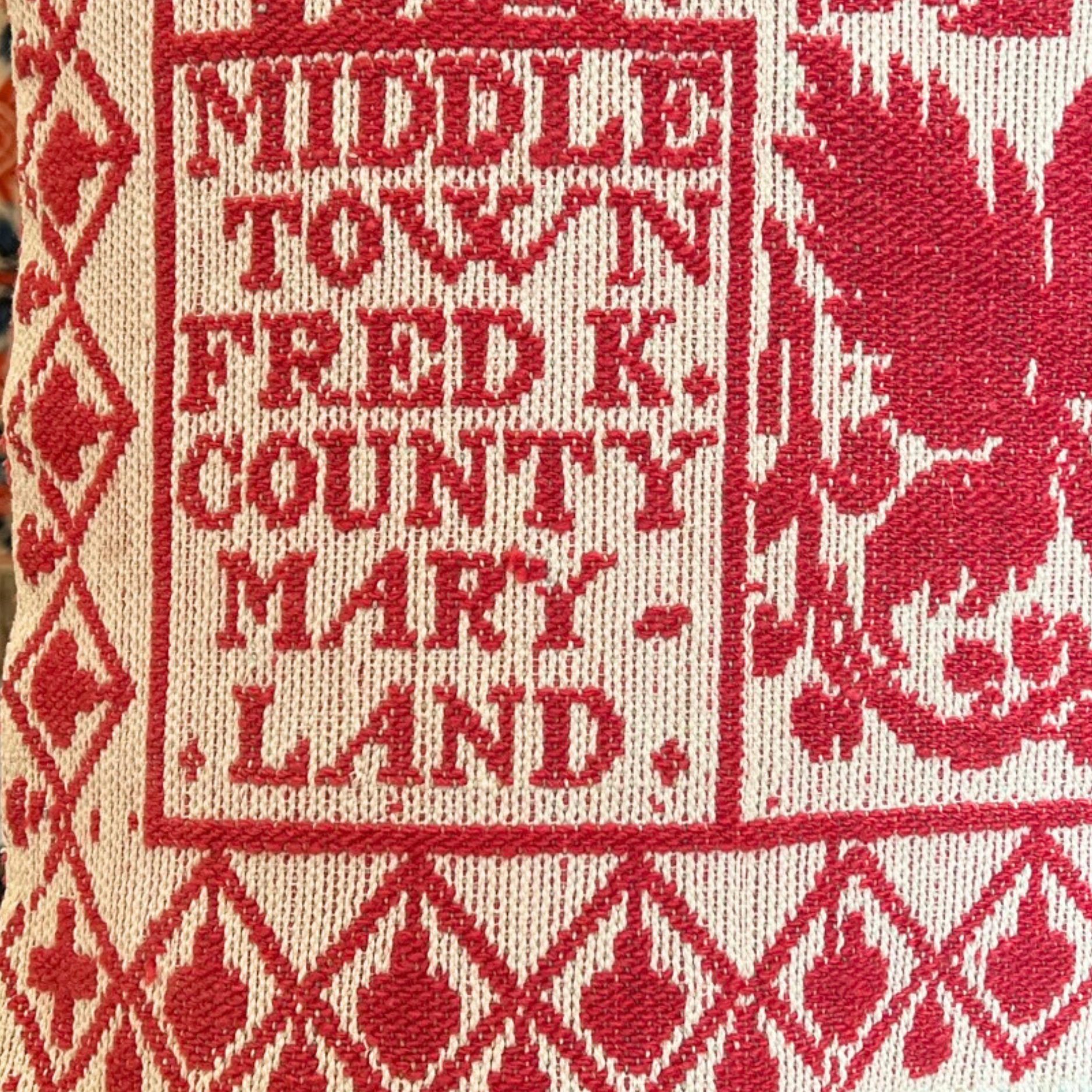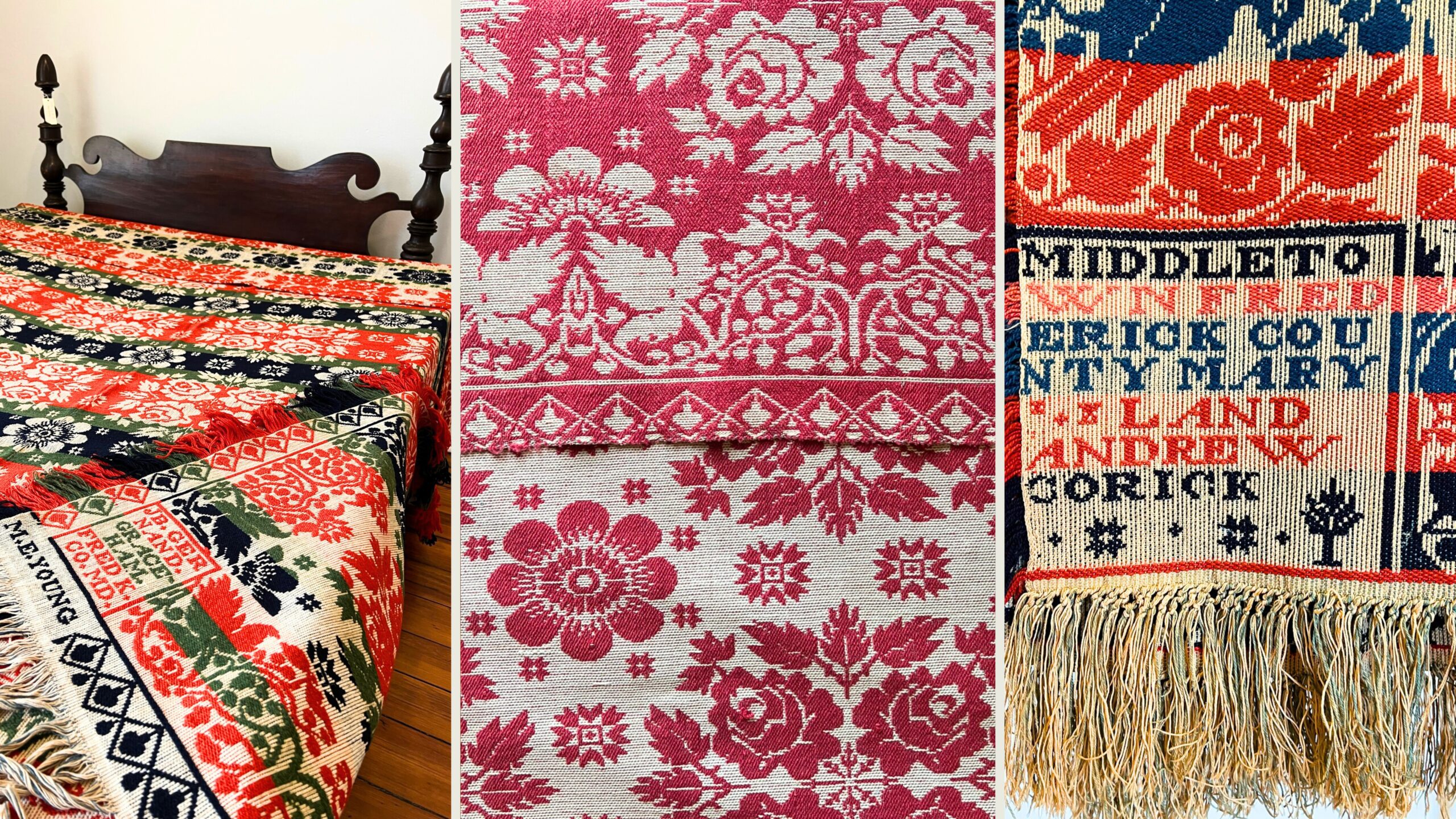
Figured and Fancy
Coverlets of Frederick County
A coverlet is a woven textile used as a decorative top on a bed, but they differ from quilts in significant ways. A weaver used a large loom to manipulate the threads into a finished fabric, rather than hand-sewing. In addition, coverlets typically were a blend of wool and cotton combined into a single layer instead of a top and bottom sewn around a batting layer. A third difference involved the weaver himself: men usually produced coverlets, because of the size of the loom and its expense. Thus, coverlets nearly always were created outside the home by professional weavers. The video below, from National Museums Scotland, demonstrates the complexity of weaving a coverlet on a large loom.
Coverlets were popular in many areas of the United States in the early to mid 19th-century. They were made to order, and customers could choose from a limited number of colors and patterns. The weaver combined dyed wool weft (vertical) threads and undyed cotton warp (horizontal) threads to create either a geometric or a “figured and fancy” design. Most looms were narrow, so coverlets often were made by joining two woven panels together along a center seam.
In Frederick County, the “figured and fancy” coverlet dominated. The pattern featured curvilinear and realistic designs that included flowers, trees, and animals, which shares a close connection to German symbols incorporated into local quilts, too. Many feature German folk motifs, such as the eight-pointed star, the sunburst, and the Distelfinken, or thistle finch, which is featured on the “Bird and Rose Bush” border. The known professional weavers in the Frederick area all either were new immigrants from Germany or children of German immigrants. Frederick County weavers also favored a particular weaving structure, called Beiderwand, that originated in northern Germany and southern Denmark during the 17th century.
“Figured and Fancy” coverlets often feature a signature block that might include the weavers name, location, the date, and occasionally the customer’s name. Unlike quilts, coverlets were meant to be reversible, so signature blocks almost always were woven in both backward and forward so they were visible on both sides.
Andrew Corick
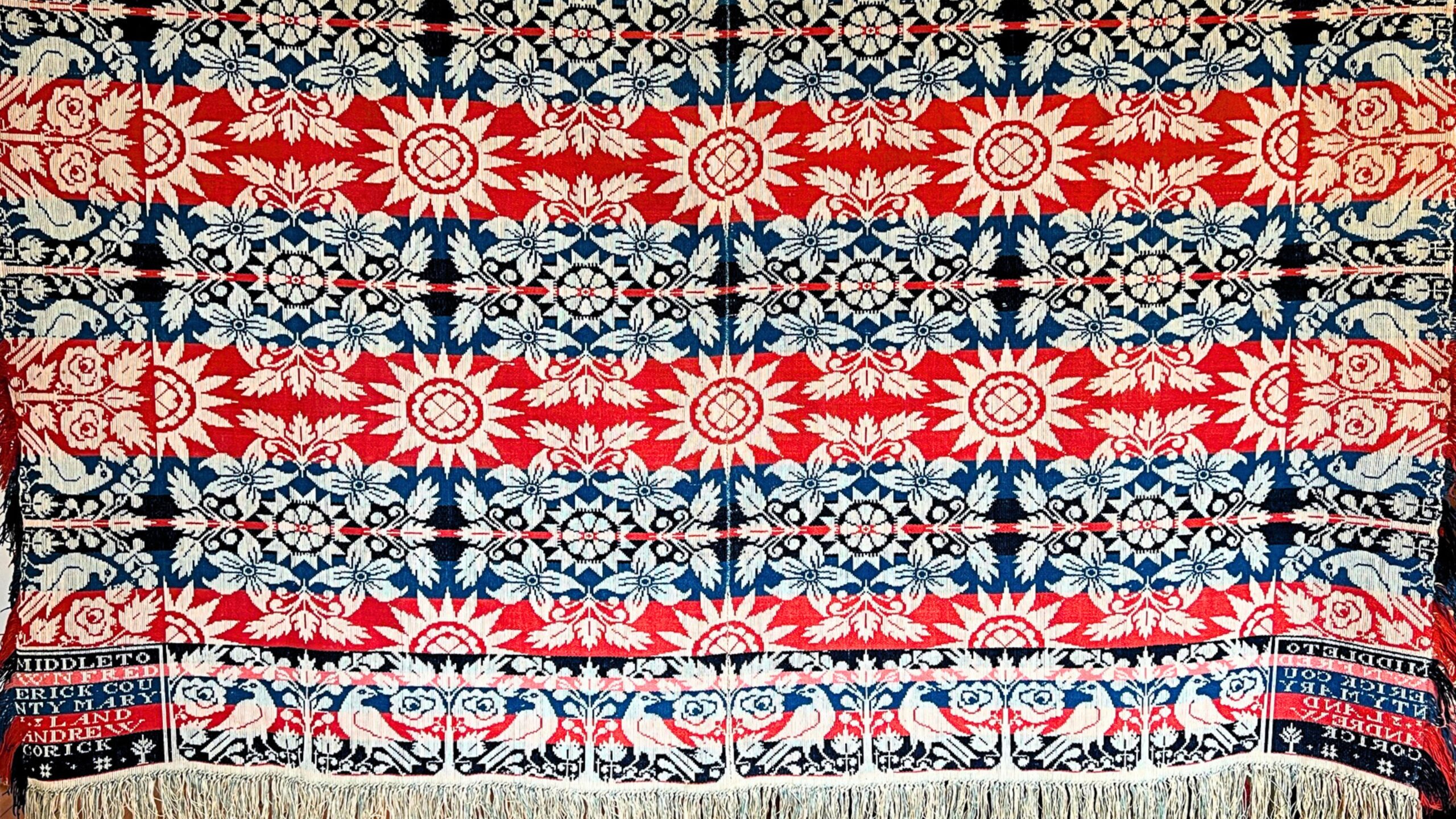
This coverlet was made by Andrew Corrick, a Middletown weaver working from the mid 1830s to the mid 1840s. He is only known to have used two different center field patterns, “Double Lily and Sunburst” and “Double Rose,” and he used the same border pattern, “Bird and Rose Bush,” for both. He typically signed his work in the corner block, with the location and his name, as he has in this example.
The piece exhibited here has a centerfield pattern of “Double Lily and Sunburst” and a border pattern of “Bird and Rose Bush.”
Andrew Corrick was born in Germany in 1791 and immigrated to the United States, settling in the Middletown Valley, by 1818. He married Catharina Kopp. He was a weaver and a farmer and the couple had two children, a son, Joshua, who also became a weaver, and a daughter, Caroline, who married weaver and machinist, Frederick K. Uber. Andrew Corrick died in 1863 and is buried at the Middletown Reformed Cemetery, Middletown.
Abraham Young

This coverlet was made by Walkersville weaver Abraham Young for Elizabeth Cramer in 1840. A band, woven the width of the coverlet and stretching between the signature corner blocks, includes her name. The centerfield pattern is “Double Lily and Sunburst” with a border pattern of “Bird and Rosebush.”
Abraham Young/Jung was born in Sankt Julian, Germany, March 10, 1805, the son of Johannes Peter and Maria Catharina Eckel Jung. Abraham arrived in the United States, settling in the Woodsboro/Walkersville area sometime before 1832, when he married fellow German immigrant, Mary Elizabeth Smith. Abraham’s father, Peter, and two of his brothers traveled from Germany to join him in 1836. Abraham most likely was weaving at this time. Abraham and Mary Elizabeth had four children before her untimely death in 1843. The following year, Abraham married Louisa Sauerman, who arrived in America just three years earlier with her parents and siblings from Hanover, Germany. In 1850, Abraham’s father died and was buried at Glade Cemetery in Walkersville alongside Mary Elizabeth.
In 1854, Abraham and Louisa moved their family to Seneca County, Ohio. Abraham is never referred to as a weaver after this time, suggesting that his loom did not make the move with him. The census records from 1860, 1870, and 1880 all list Abraham as a farmer in Seneca County. Abraham died on January 16, 1892, and his obituary in Tiffin, Ohio newspapers identified him as a “pioneer of this county.” He was the father of thirteen children.

Abraham Young wove the name of his client, Elizabeth Cramer, into the border of this coverlet
Jacob Gernand

This coverlet was made for M. E. Young by Graceham weaver Jacob Gernand. The client’s name can be seen woven directly beneath the signature corner block. Gernand’s coverlets rarely include this feature.
The piece has a centerfield pattern of “Double Rose” and a border pattern of “Grapevine.”
Jacob Gernand was born in Graceham, May 26, 1797, the son of John Adam and Anna Catharina Weller, members of well-known and highly respected German families who had already been in the area for many years. Jacob’s only occupation throughout his life seems to have been weaving. The census records that he appears in consistently refer to him as a weaver. His brother, Emanuel, practiced the same profession in Westminster. Jacob was married three times and had eleven children, one of whom, William Henry Gernand, also went into weaving. Jacob Gernand is listed in the 1870 census as retired from weaving and living in Mechanicstown (now Thurmont). He died November 26, 1871 in Graceham.
Frederick Uber
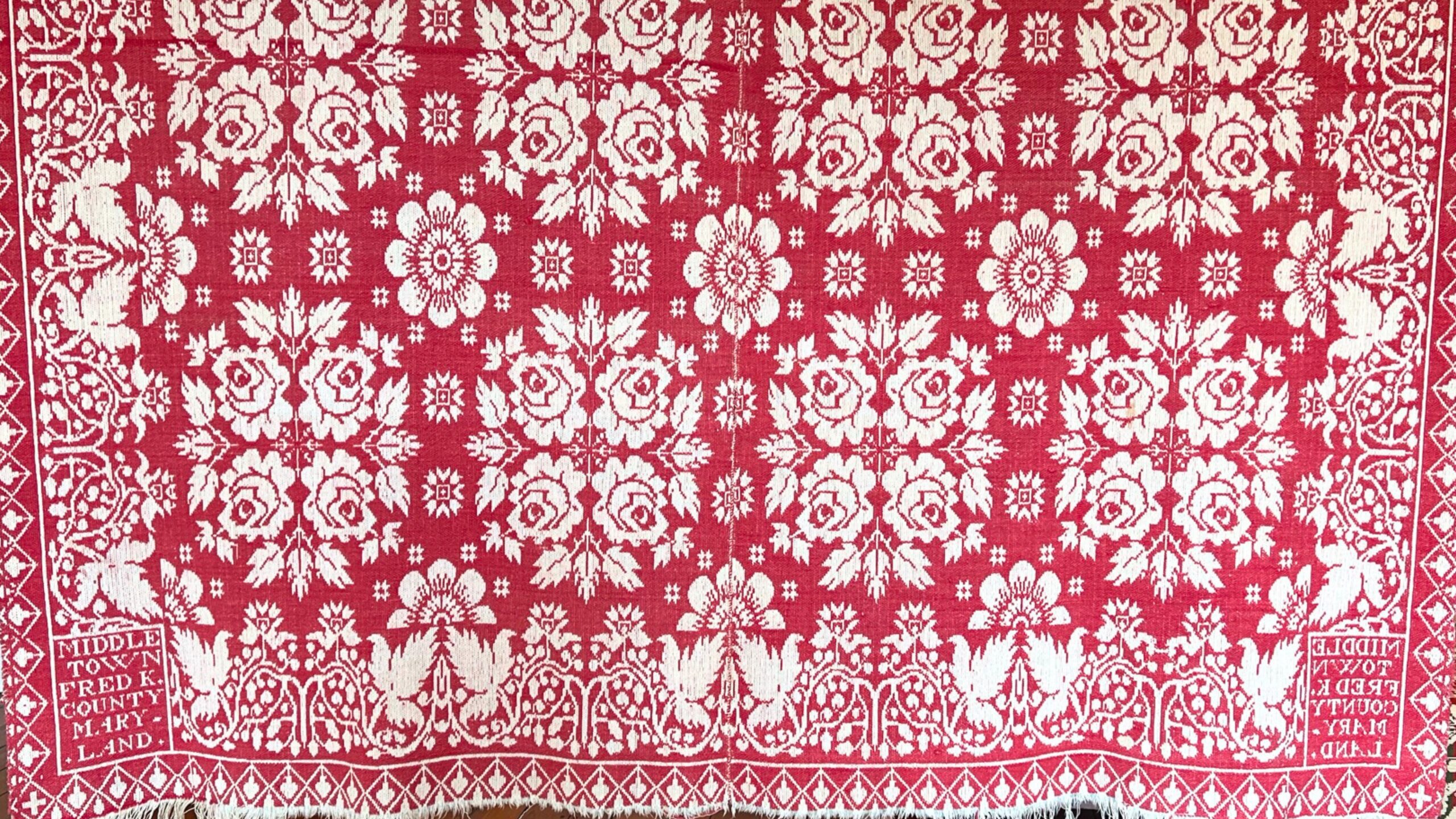
This coverlet was made by Middletown weaver Frederick Uber. The centerfield pattern is “Double Rose” with a border pattern of “Grapevine.”
Frederick K. Uber was born in Kassel, Germany in 1814. By 1841, Uber had settled in Middletown, marrying Caroline Corrick, daughter of another coverlet weaver, Andrew Corrick, and his wife, Catharina. While Uber may have begun weaving prior to this time, his production seems to be limited to several years during the 1840s, advertising in Middletown in 1846. In the 1850 census for Middletown, he is listed alongside his wife and two children, as a tinner, working in the fabrication of steel products. A listing in the local newspaper in 1852 announced Uber’s intention to travel to California in search of gold alongside several men from the Middletown Valley. The paper also announced his return to the area two years later.
Within a few years of Uber’s return home from California, the family moved to Baltimore. They lived on Barre Street very near to the Baltimore & Ohio Railroad’s Camden Depot. On June 30, 1861, Frederick Uber accidentally was shot through the arm while he stood outside his home watching the 22nd New York Regiment make their way to the depot. With the exception of a few years as a Baltimore police officer during the Civil War, Uber continued to work as a machinist for his remaining years. Frederick Uber died March 31, 1892 in Baltimore and was buried at Cedar Hill Cemetery, Brooklyn Park, Anne Arundel, MD.

